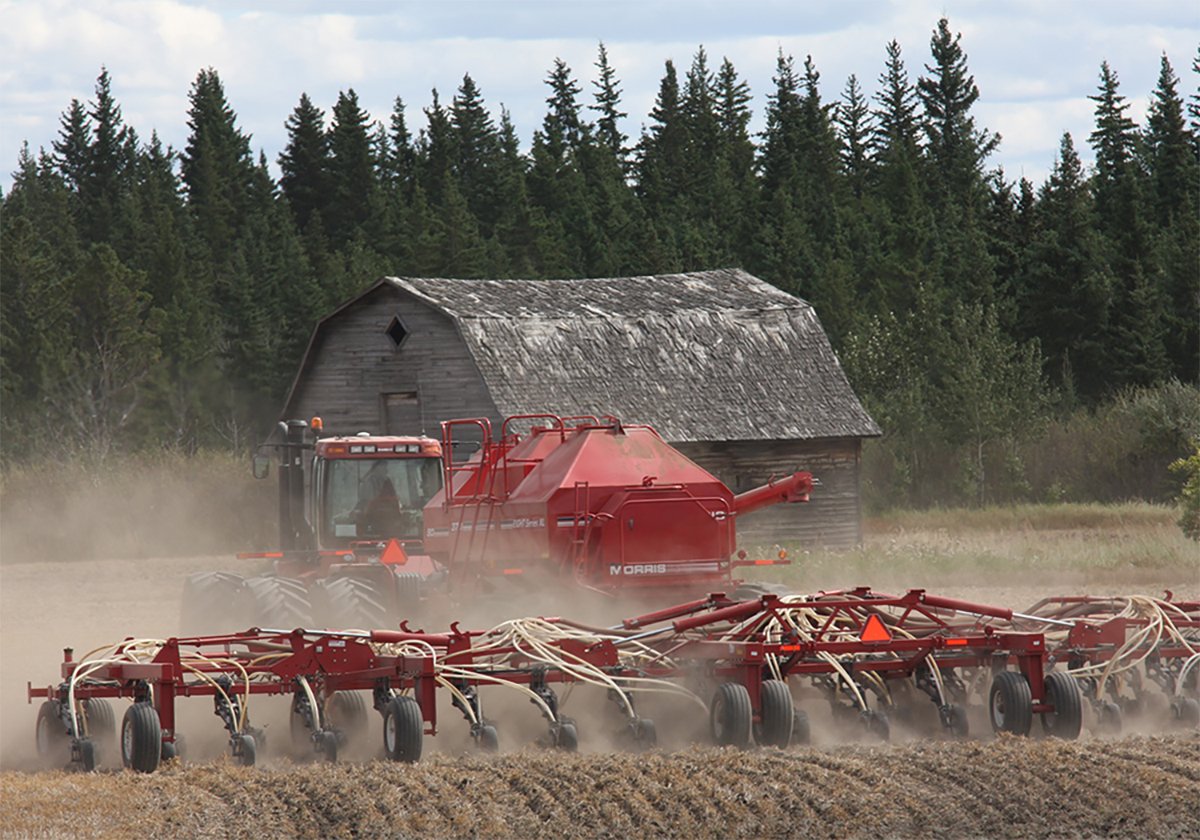Canola is stretching at the end of its price tether, and that’s
allowing farmers to reach out and grab some good prices at harvest and
possibly better ones over the winter.
But while the general price outlook for the fall and winter is
excellent, farmers should watch out for widening basis levels and the
possibility of strangling off demand by spring, analysts say. That
could see the price leash snap back.
“How much will the market bear?” wondered Statcom canola analyst Nolita
Read Also

Seeding conditions look good for U.S. winter wheat crop
SASKATOON — Seeding conditions are near ideal in the hard red winter wheat growing region of the United States, says…
Clyde.
“This is the year when we’re going to find out what the inelastic
demand for canola oil is.”
Canola futures are now selling at a high premium to Chicago soybean
futures, a commodity that generally sets the price trend in vegetable
oils. At this time of the year, canola would usually have a $22 US per
tonne premium to soybeans, Clyde said. But last week the premium was
$63 and the week before $71.
Recently the premium has slipped a little, but analysts say the
Canadian canola crop is so small that it will be able to force big
premiums for months to come.
“This is an extraordinary year,” said Ken Ball of commodities broker
Benson Quinn in Winnipeg.
“It’s a year when holding a bit back to gamble with might pay off.”
Ball said many Manitoba farmers, who have much better crops than
drought-ravaged Saskatchewan and Alberta, are selling much of their
crops right off the combine, even though basis levels are high.
“They’re saying they don’t much care if it goes to $10 a bushel down
the road. They’ll take $9 or $9.25 right now,” said Ball.
“You don’t often get $9 per bu. at harvest.”
Calgary analyst Errol Anderson of Pro Market Wire Report said farmers
should hang onto their canola until they get better offers than what’s
posted following the recent stumble in futures prices and the widening
basis resulting from the Vancouver port shutdown.
“The signal of a wide basis and falling futures is ‘do nothing,’ ” said
Anderson.
“If I was a grower, I would just park it. Don’t price it into a wide
basis.”
Anderson said he thinks prices and basis levels will start improving in
mid-October and will probably be best after Christmas.
But he said basis levels will probably swing wildly and farmers should
carefully watch them before accepting a bid for their canola.
Ball said farmers should consider basis contracts, which would allow
them to capture a rising futures market.
“If farmers can find an attractive basis, take out a basis on a further
out contract once they’ve got the crop in the bin and know they can
deliver,” said Ball.
That would produce much better returns for a farmer who sees futures
climb to $480 per tonne, but also sees the basis widen to $45 from $15.
With a basis contract, the futures gain is grabbed but the basis
widening is avoided.
Anderson said farmers should also watch for “sweetheart deals” suddenly
appearing from buyers.
If a grain company is committed to a sale and doesn’t have enough
canola, it will move fast to lock in supply. But the only ones who will
benefit are farmers who get called by their grain company.
Anderson said farmers need to make sure they’re on the buyer’s list.
“When the buyer is squeezed, they’ll bring out their little black book
and see who’s been calling, because they need it instantly,” said
Anderson.
Waiting for prices to reach the stratosphere might be “a strategy for
failure” because no one knows when the market will peak and fall, said
Anderson.
Last spring, many growers who kept canola in their bins hoping for a
continuing price spiral suffered as canola demand dried up, Clyde said.
“We basically priced ourselves out of the market,” she said. “When
farmers wanted to deliver, it was too late. We had already rationed a
lot of the buyers out of the market.”
Anderson said farmers should avoid extreme speculation.
“Just sell into rising markets. You’ll never hit the top, but it’s a
great year for canola growers if they just gradually sell into it.”
Ball sees little downside potential over the winter, but if demand is
absolutely strangled by next spring, the price could slump again.
That isn’t likely because this is an exceptional year, but farmers
should remember the possibility as they market their crop in the coming
months.
Clyde said farmers should realize prairie crushers are losing money and
aren’t going to stick their necks out.
“I don’t think the crushers want to sell a whole lot of oil right now
because they’re not confident they can guarantee the supply to crush.”
Canola would be helped by any overall rise in the vegetable oils
market, but Clyde said it is impossible to forecast.
Palm oil has recently been biting into some of the premium soybeans
hold over it, but that is because soybean oil is weakening.
“Usually we see palm go up. This week we saw Chicago go down.”
Clyde said the dark cloud on the horizon for soybeans is the forecast
for a huge South American crop. If that crop, which will be harvested
in the spring, is as big as some fear, then there will be lots of soy
oil around to pressure veg oil prices.















